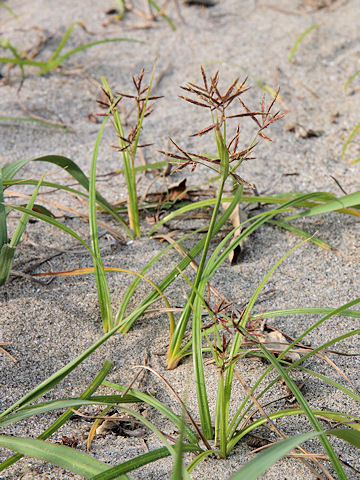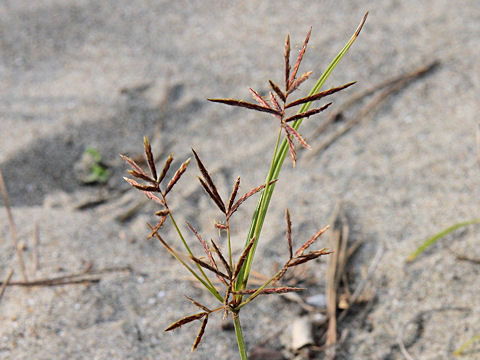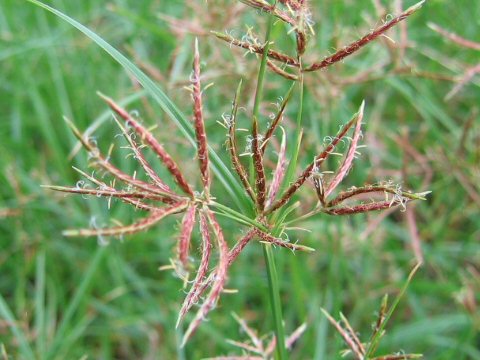 |








|

|
わが国の本州から四国・九州をはじめ、世界の熱帯・亜熱帯地域に広く分布しています。海岸の砂浜や道端、田んぼの畔などに生え、高さは20〜40センチになります。茎は直立して、線形の葉が叢生します。夏から秋にかけて、茎の先に2〜3個の苞葉をだし、その真ん中から不揃いの茶褐色の小穂をつけます。肥大した根茎は、漢方では香附子(こうぶし)と呼ばれ、神経症や月経不順に用いられます。台湾華語では「香附子」、中国語では「香附子(xiang fu zi)」と呼ばれます。C4植物(C4型光合成を行う植物)です。
|

|
カヤツリグサ科カヤツリグサ属の多年草で、学名は Cyperus rotundus。英名は Nut grass。
|

|
The Nut grass (Cyperus rotundus) belongs to Cyperaceae (the Sedge family). It is a perennial herb that is native to Honshu, Shikoku and Kyushu of Japan and sub-tropical to tropical areas of the world. This herb grows on maritime sands, roadsides and rice field linches, and can reach 20-40 cm in height. The stem is erect and the linear leaves are clumping. The brownish-red irregular spikelets are borne on the stem apices with two or three bracts in summer to fall. The rhizomes are thick and used as a herbal medicine for nervous disease or menstrual problem. It is called "香附子" in Taiwanese Chinese and "香附子" (xiang fu zi) in Chinese. It is a C4 plant (Plants with C4-type photosynthesis).
|

|
[上・中1] 茨城県神栖市柳川「波崎海岸」にて、2008年08月01日撮影。
[中2・下] 愛知県南知多町「篠島」にて、2004年10月02日撮影。
|





